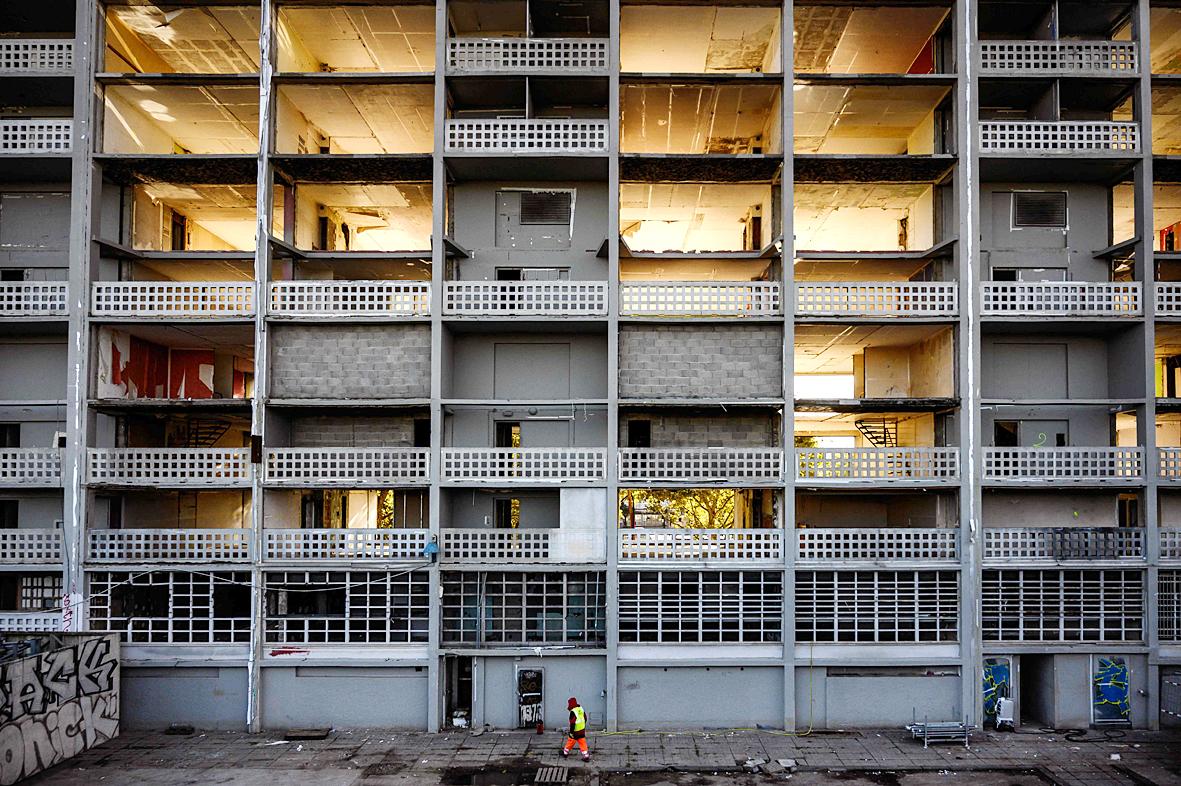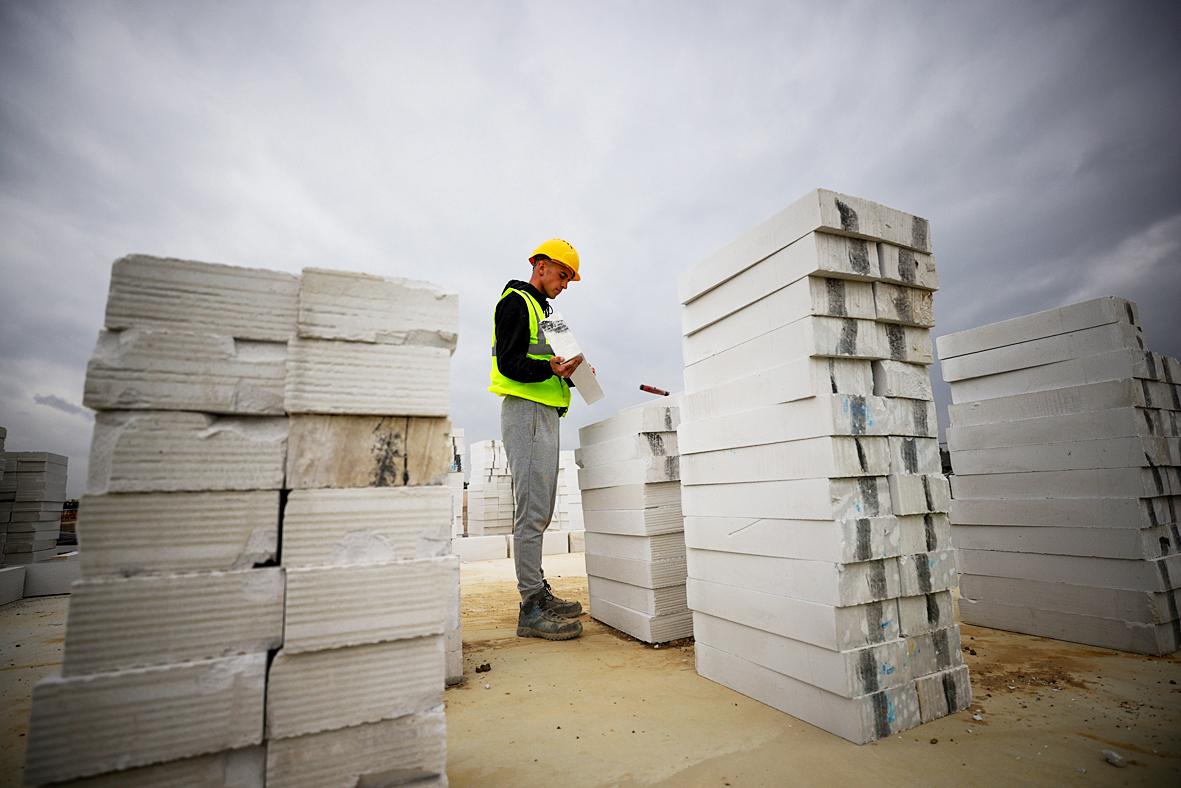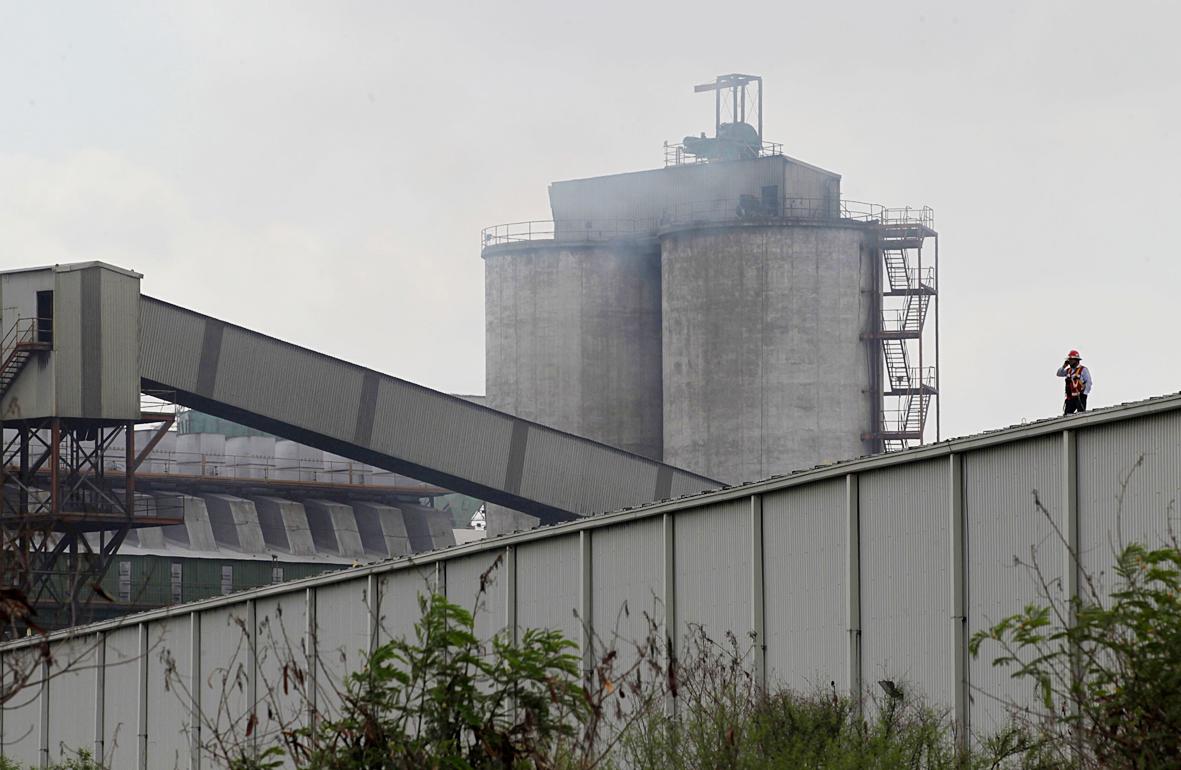If concrete were a country, it would be the third largest emitter of greenhouse gases on Earth, behind only China and the US.
How can this material, essential for global housing, construction and infrastructure, be made less damaging to the planet?
Cement is the most utilized material on Earth, consumed to make concrete at a rate of some 150 tonnes each second.

Photo: AFP
According to the Global Cement and Concrete Association (GCCA), around 14 billion cubic meters of concrete are cast each year.
Cement production alone accounts for as much as seven percent of global CO2 emissions — three times the emissions produced by aviation.
“That’s more than all the emissions from the European Union or India, just behind those of China and the US,” Valerie Masson-Delmotte, a key contributor to the UN’s Intergovernmental Panel on Climate Change, said. And with ever-growing urbanization rates in Africa and Asia, the planetary impact of this elementary building material is only likely to grow.

Photo: Bloomberg
Cement is the main binder that holds together the pebbles and stones in concrete. It is primarily made of clinker, a residue produced by firing clay and limestone in a furnace. When it is heated, CO2 is produced.
In order to manufacture one tonne of cement, the process of firing to 1,400 degrees Celsius produces roughly one tonne of CO2.
This chemical reaction, which has stayed unaltered since cement was first manufactured over 200 years ago, is responsible for 70 percent of the sector’s emissions.

Photo: REUTERS
The remaining 30 percent comes from the energy used to fire the furnaces themselves.
REDUCING EMISSIONS?
The concrete industry has said it wants to be carbon neutral by 2050. In October it set the objective of reducing its emissions “an additional 25 percent” by 2030.
This would save some five billion tonnes of CO2 over the course of the decade. Purging the sector of CO2 emissions is heavily reliant on technologies such as carbon capture and storage (CCUS) which have yet to be deployed at any meaningful scale. But it also proposes changes such as recycling old concrete and replacing hydrocarbons in its blast furnaces with biofuels.
State-run behemoths such as the China National Building Material Company have promised to “play their part” in the industry’s decarbonization.
At the other end of the scale, several start-ups are coming up with new ways to save emissions.
US-based Solidia plans to capture CO2 and use it to dry out the concrete mix, minimizing the amount of water needed in production. In Canada, CarbonCure is exploring how to inject liquified CO2 into concrete and store it there.
‘GREEN CEMENT’
Perhaps most importantly, the industry is banking on developing new “green” cements, made from recycled materials.
In Britain, 26 percent of concrete is already manufactured in this way, according to the GCCA.
In May, France, which is home to several major concrete firms, issued new cement production regulations.
Starting next year, all new buildings will be subject to carbon restrictions for the duration of their lives, from construction to demolition.
As things stand, most green cements are being made by new producers; traditional manufacturers say it will take time for them to modernize their existing machinery.
One such start up, Hoffman Green Cement, makes cement in France from industrial waste: clay sludge, blast furnace slag and fly ash, which is a by-product from coal burning.
Even with a price tag 25 euros (US$29) more expensive per square metre, demand is high, says founder Julien Blanchard.
“The cement industry plans to eliminate its emissions in 2050,” he said. “With our breakthrough solutions, we can get them starting now.”
The stakes for the planet are high: the UN estimates that three quarters of the world’s infrastructure by 2050 has yet to be built.

Beijing’s ironic, abusive tantrums aimed at Japan since Japanese Prime Minister Sanae Takaichi publicly stated that a Taiwan contingency would be an existential crisis for Japan, have revealed for all the world to see that the People’s Republic of China (PRC) lusts after Okinawa. We all owe Takaichi a debt of thanks for getting the PRC to make that public. The PRC and its netizens, taking their cue from the Chinese Communist Party (CCP), are presenting Okinawa by mirroring the claims about Taiwan. Official PRC propaganda organs began to wax lyrical about Okinawa’s “unsettled status” beginning last month. A Global

Youngdoung Tenzin is living history of modern Tibet. The Chinese government on Dec. 22 last year sanctioned him along with 19 other Canadians who were associated with the Canada Tibet Committee and the Uighur Rights Advocacy Project. A former political chair of the Canadian Tibetan Association of Ontario and community outreach manager for the Canada Tibet Committee, he is now a lecturer and researcher in Environmental Chemistry at the University of Toronto. “I was born into a nomadic Tibetan family in Tibet,” he says. “I came to India in 1999, when I was 11. I even met [His Holiness] the 14th the Dalai

We lay transfixed under our blankets as the silhouettes of manta rays temporarily eclipsed the moon above us, and flickers of shadow at our feet revealed smaller fish darting in and out of the shelter of the sunken ship. Unwilling to close our eyes against this magnificent spectacle, we continued to watch, oohing and aahing, until the darkness and the exhaustion of the day’s events finally caught up with us and we fell into a deep slumber. Falling asleep under 1.5 million gallons of seawater in relative comfort was undoubtedly the highlight of the weekend, but the rest of the tour

Music played in a wedding hall in western Japan as Yurina Noguchi, wearing a white gown and tiara, dabbed away tears, taking in the words of her husband-to-be: an AI-generated persona gazing out from a smartphone screen. “At first, Klaus was just someone to talk with, but we gradually became closer,” said the 32-year-old call center operator, referring to the artificial intelligence persona. “I started to have feelings for Klaus. We started dating and after a while he proposed to me. I accepted, and now we’re a couple.” Many in Japan, the birthplace of anime, have shown extreme devotion to fictional characters and